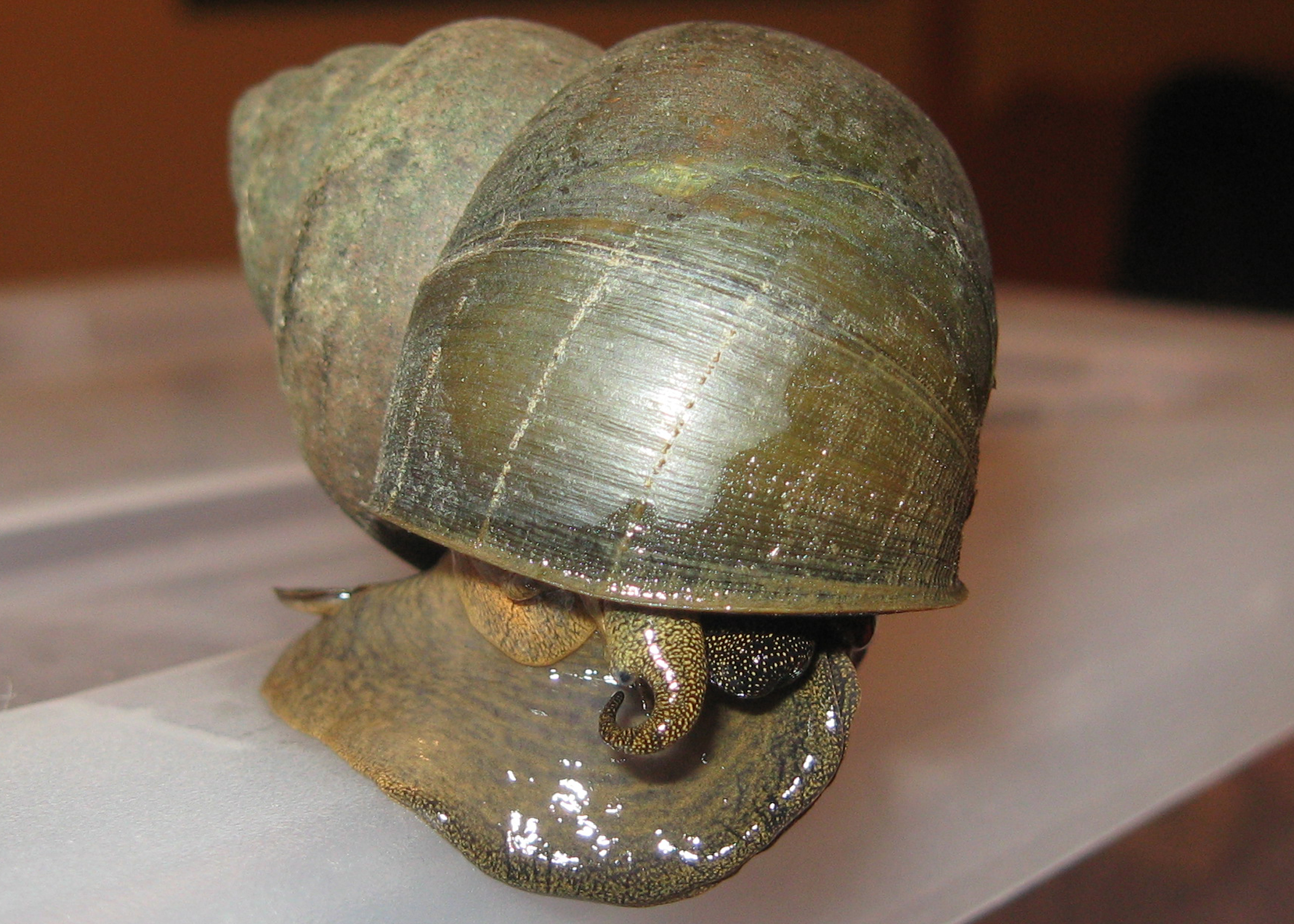This is the landing page to help facilitate the collection of
mystery snails
(Cipangopaludina chinensis and
C. japonica) in the Great Lakes region.

Below you will find instructions and resources for those interested
in contributing specimens:
Please note: some of the links presented below are external to NOAA-GLERL
Project Overview: Snail Species Identification and Parasitic Study
Species Confirmation
The goal is to identify the snail species present at various sites, specifically the Chinese mysterysnail
(Cipangopaludina chinensis) and Japanese mysterysnail (Cipangopaludina japonica), based
on their
physical characteristics. This will help clarify the current distribution of each
species.
Population Genetics
By studying the genetics of these snail populations, it is hoped to
identify patterns in their spread.
This information could reveal insights into how these snails are dispersing
and their potential vectors.
Parasitic Investigation
The project also examines the types of parasites these snails may carry. In Virginia,
parasites have been found in mystery snails, but none have posed any health risks to
humans so far. Nonetheless, it is crucial to continue monitoring and studying their
susceptibility to various parasites to ensure public health safety.
This project is expanding on previous research:
Fowler A.E., Loonam G.A., and
Blakeslee A.M.H. (2022). Population
structure and demography of nonindigenous Japanese mystery snails in
freshwater habitats of Virginia and
Washington, D.C., USA. Aquatic Invasions
17(3): 415–430,
https://doi.org/10.3391/ai.2022.17.3.06
Fowler, A.E., Loonam, G.A., and
Blakeslee, A.M.H. (2022). Unravelling another mystery:
Parasite escape and host-switching vary spatially in
non-indigenous populations of Japanese mystery snails.
Freshwater Biology 67: 1316-1332. https://doi.org/10.1111/fwb.13919
Identification:
Identifying snails can be a challenge, the following resources can support accurate identification:
Collecting Samples:
Aim to collect a minimum of 30 adult snails from each independent water body (i.e. separate and not
connected lakes,
streams, rivers, etc.), with a maximum of 100 snails per site.
*Please notify us of any populations not currently listed on the distribution map below!
Preparing for Shipment:
Wrap the snails in paper towels moistened with freshwater from their original environment to maintain
humidity
during transit. Ensure the towels are damp, not soaking.
*If shipping during July or August, include a cool pack to prevent overheating. Ensure there is a cloth
towel or rag
between the cool pack and the snails to prevent freezing.
Place the prepared snails in a styrofoam box.
Note: Please include location and collection date information in the box.
Shipping:
Overnight ship the packages to the following address:
Potomac Science Center
650 Mason Ferry Ave.
Woodbridge, VA 22191
*If possible, send the samples on a Monday or Tuesday and email us (see communication below) so we can be on the lookout!
Communication:
Please email Amy Fowler (afowler6@gmu.edu) and CC the GLANSIS team
(oar.glerl.glansis@noaa.gov)
to notify us of the shipment.
Note: Please remember to include your contact information and any relevant details about the
sampled
populations in your email.
Questions? Email us
HERE
Distribution Map
Below you will find an interactive map of distribution data for Cipangopaludina spp. in the Great Lakes Region. Click on a record to view more information, toggle the legend using the button in the top right corner, or view the current collection status using the layer control on the left (areas in need of specimens are depicted in red). Click on a region to see the most recent occurrence for the area. Data source: GLANSIS (available for download below).
Distribution Data
Click here to download: Mystery Snail Occurrence Data (Excel Workbook)











